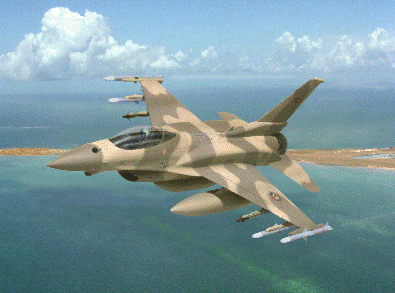
Douglas Barrie/LONDON Graham Warwick/WASHINGTON DC
Victory in the $7 billion United Arab Emirates (UAE) fighter competition will allow Lockheed Martin to cut drastically its F-16 Block 60 bid price in the Greek and Norwegian fighter competitions now in progress.
Sources close to the Norwegian programme say that the UAE's decision to be launch customer for the Block 60 will allow the US aerospace giant to slash unit costs for the Norwegian competition by as much as $15 million, from a price of about $40 million.
Selection of the Block 60 F-16 over the Dassault Rafale and Eurofighter EF2000 after a four-year evaluation was announced on 12 May by Sheikh Khalifa bin Zayed Al Nahyan, deputy supreme commander of the UAE Armed Forces, during a visit to Washington.
Block 60 development flight testing will begin in 2001. Deliveries are to begin in 2002 and be completed in 2004, with production reaching three a month. A contract signature is expected later this year.
The UAE order will extend the F-16 production life significantly, as well as substantially enhancing the fighter's capabilities, says John Bean, UAE programme director at Lockheed Martin Tactical Aircraft Systems in Fort Worth, Texas.
The UAE's aircraft will incorporate an active array radar, internal targeting sensor, large colour displays, internal electronic countermeasures, enhanced performance engine and conformal fuel tanks. A helmet mounted display is a growth option, Bean says.
He adds that the weapons range included in the deal "-is a government-to-government matter". During the contest it became clear that the UAE wanted the release of the active radar-guided Raytheon AIM-120 Advanced Medium Range Air-to-Air Missile. The selection of the Block 60 indicates that this is no longer an issue. The aircraft will also carry the UAE's GEC-Marconi-developed PGM family of stand-off munitions.
Northrop Grumman will supply the agile beam radar, a development of the F-16's APG-68. The company will also provide the dual sensor forward looking infrared system, which will be integrated with the radar. The navigation sensor will be turret-mounted on top of the nose and the targeting sensor, including a laser rangefinder/designator, underneath its nose.
General Electric and Pratt & Whitney have offered enhanced performance versions of their respective F110 and F100, and the UAE is expected to make its final decision between the two "in the next few months", Bean says. The engines offer about 10% more thrust, coupled with greater fuel efficiency and longer service life.
Conformal fuel tanks, mounted on the fuselage above the wing, will extend range by "more than 30%" over the standard F-16, Bean says.
He adds that the sale needs US Congressional approval, after which final details of the deal will be concluded. There will be two contracts, he says: a commercial one with Lockheed Martin, worth about $5 billion and covering development of the Block 60 F-16, and production and support of the 80 aircraft. The second will be a foreign military sales deal with the US Air Force, covering weapons, training and support.
Lockheed Martin declines to comment until after the contract is signed on whether the UAE will pay the entire bill for development of the Block 60.
Source: Flight International























